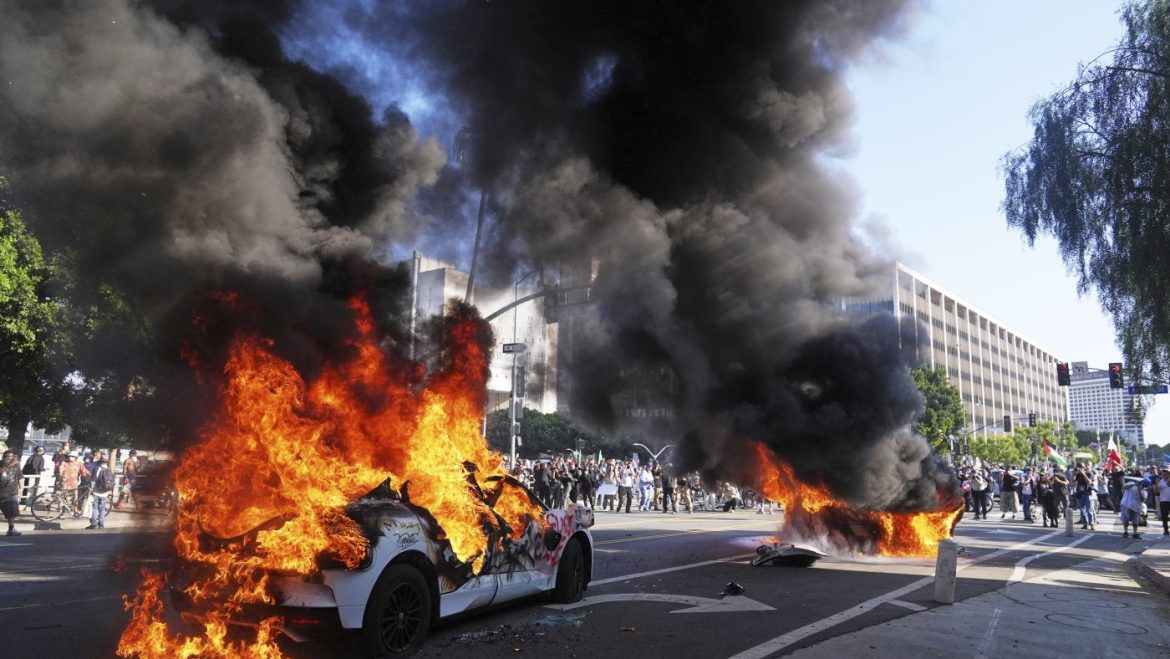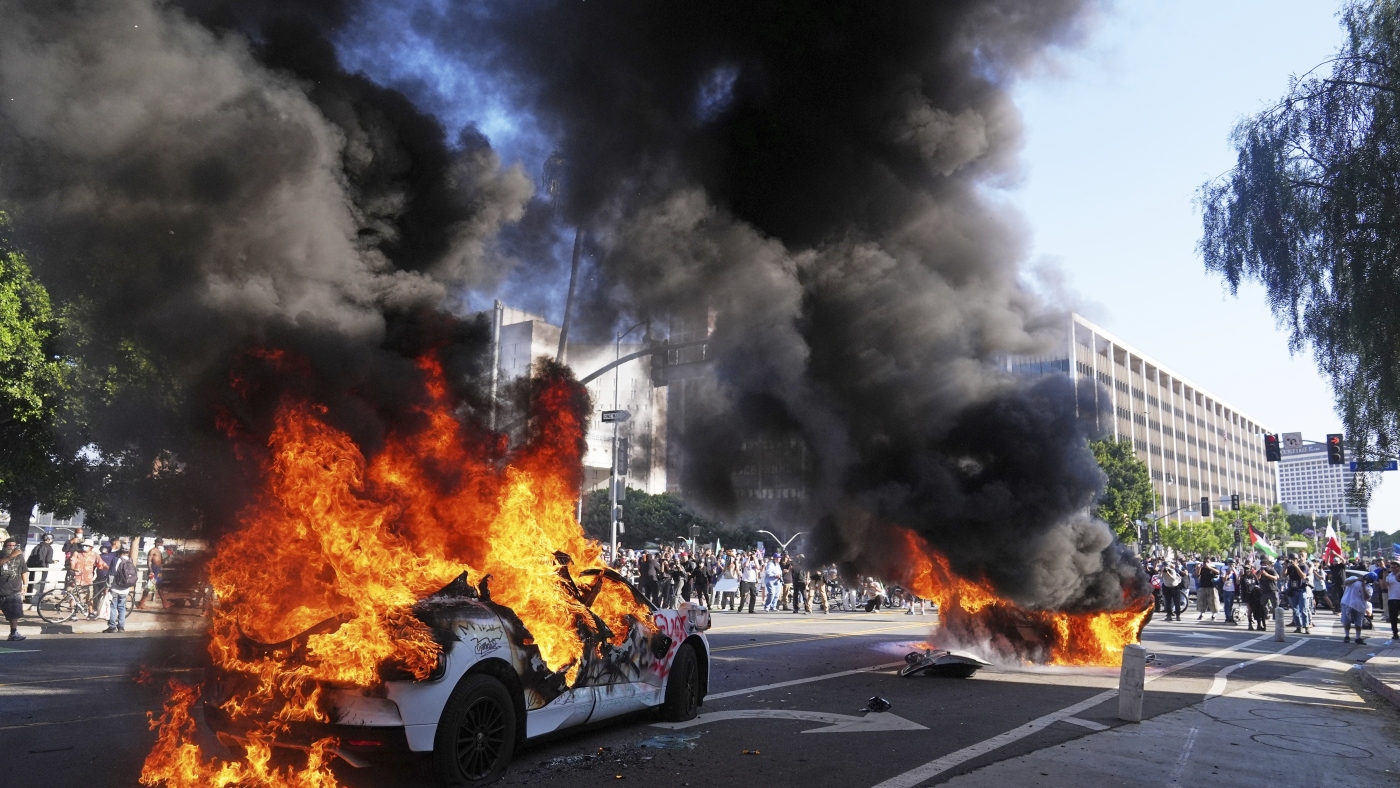Unfolding Unrest: The Third Day of Protests in Los Angeles over Immigration Raids
The city of Los Angeles has become a focal point of intense and ongoing conflict as protests enter their third consecutive day following recent federal immigration raids. The situation intertwines public dissent, law enforcement responses, political decisions, and community tensions, creating a complex urban drama.
The Spark: Immigration Raids and Public Outrage
The catalyst for these demonstrations is the federal government’s aggressive immigration enforcement actions that led to the arrest of over 100 immigrants who lack legal status in the U.S. The raids have ignited widespread opposition among immigrant communities, activists, and allies who view the operations as unjust and detrimental to families and neighborhoods. Protesters have taken to the streets, primarily in downtown Los Angeles, to voice their condemnation and demand change.
Intensifying Protests and Confrontations
The protests, initially peaceful, have escalated in scale and fervor, drawing thousands of participants on each day, especially as they marked the entry into the third day of unrest. The demonstrators’ demands underscore calls for humane immigration policies and an end to what they describe as aggressive federal overreach.
However, these gatherings have not been without conflict. Law enforcement agencies, including the Los Angeles Police Department (LAPD) and federal agents, have faced off with protesters under increasingly tense circumstances. Reports indicate rock and concrete throwing towards officers, leading police to deploy crowd control measures such as tear gas and rubber bullets. Arrests have been made; the LAPD confirmed approximately 29 arrests during the latest protests.
National Guard Activation: Escalating the Response
In reaction to the ongoing unrest, President Trump authorized the deployment of roughly 2,000 members of the California National Guard to Los Angeles. This decision followed objections from California’s Democratic leadership, including Governor Gavin Newsom and Los Angeles Mayor Karen Bass, who expressed concerns that military presence might exacerbate tensions.
Nevertheless, the National Guard has arrived in the city, adding a significant element of militarization to the city’s response. The deployment aims to restore “law and order” amid a volatile atmosphere but simultaneously deepens divisions between local authorities, state officials, federal agencies, and protesting communities.
Political and Social Dimensions
The Los Angeles protests are emblematic of larger national debates over immigration policy, federal authority, and civil liberties. California’s leadership has framed the federal actions as confrontational and counterproductive, advocating for immigrant rights and community protection. Conversely, the Trump administration emphasizes enforcement and border security as central to its platform, justifying the raids and deployment of troops as necessary for public safety.
This clash of perspectives resonates widely across the nation, highlighting polarized attitudes toward immigration and government intervention. The protests also reveal the emotional and human side of policy, where families and individuals facing deportation respond with urgency and resolute opposition.
Media Coverage and Public Perception
Coverage from various news outlets shows a pattern of visuals and live updates depicting both the scale of protests and the charged atmosphere of confrontations. Photographs convey scenes of large crowds, law enforcement lines, activated National Guard troops, and moments of tension involving tear gas and physical clashes.
The narrative captured by the media serves a dual role: informing the public about the events as they evolve and shaping broader public opinion. The presence of military forces in an urban setting draws particular scrutiny and concern, prompting wider discussion about civil rights and appropriate responses to civil unrest.
Impact on the Community and Future Outlook
The ongoing protests and law enforcement reactions have heightened fear and uncertainty among immigrant communities in Los Angeles. The visible deployment of military personnel on the streets adds to a sense of crisis and urgency.
Looking forward, the trajectory of the protests will likely depend on several factors: federal decisions on immigration enforcement, local government responses, possible negotiations or policy shifts, and the capacity of community leaders to channel dissent constructively.
As tensions persist, it is evident that Los Angeles is at a critical juncture, balancing between the assertion of federal authority and the resistance rooted in immigrant advocacy. The outcome will influence not only the city’s social fabric but also set precedents for handling similar disputes across the country.
—
Conclusion: The Ongoing Struggle at the Intersection of Law, Policy, and Humanity
The three-day protests in Los Angeles underscore the deep fractures and heated emotions surrounding immigration enforcement in America today. They reveal not just a clash over legal frameworks but a profound human struggle involving families, identities, and community values. The unfolding events demand careful navigation, as militarized responses may quell disturbance temporarily but risk inflaming long-term divisions.
In this charged environment, the voices of those protesting call out a plea for recognition, dignity, and fairness amid turbulent governmental actions. Los Angeles remains a vivid stage where the broader national dialogue plays out in real time—highlighting that immigration is not merely a policy issue but a deeply personal and societal crossroads.


